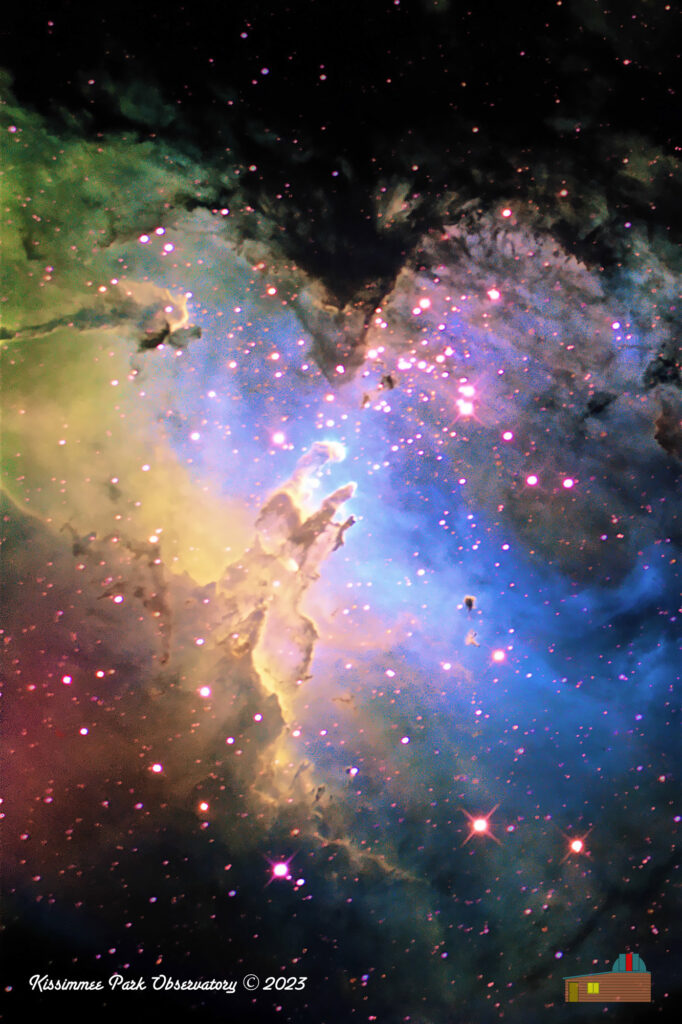Messier 16, also known as the Eagle Nebula, is a fascinating celestial object located approximately 7,000 light-years away from Earth in the constellation Serpens. It is a young star-forming region that is home to some of the most stunning and iconic structures in the universe – the Pillars of Creation.
The Pillars of Creation are towering columns of gas and dust that stretch over 5 light-years into space. They were first discovered in 1995 by the Hubble Space Telescope and have since become one of the most famous and recognizable astronomical images of all time.
These pillars are made up of dense molecular gas and dust, which are the building blocks of stars. The intense radiation from nearby young stars is sculpting and shaping the pillars, causing them to erode and break apart over time. Despite this, they are still actively forming new stars within their dusty confines.
The Pillars of Creation are not only visually stunning, but they also hold important clues about the formation and evolution of stars and planets. By studying the chemical composition and physical properties of the gas and dust within the pillars, astronomers can learn more about the processes that lead to the birth of new stars and planetary systems.
In addition to the Pillars of Creation, Messier 16 is also home to a cluster of young, hot stars known as NGC 6611. These stars are responsible for the intense radiation that is shaping and sculpting the pillars.
Overall, Messier 16 and the Pillars of Creation are a testament to the beauty and complexity of the universe. They remind us of the incredible forces at work in the cosmos and the ongoing process of star formation and evolution. As we continue to explore and study these structures, we will undoubtedly uncover even more secrets about the origins and nature of our universe.
Click on the image to view a larger version you can explore – and there is a lot to explore in this image!
I captured a wide-field image of M16 back in 2020, and then again in 2022. I guess I like to shoot this target!
See this image documented in Catching Ancient Photons on YouTube:
Image Info
- Imaged from the KPO field, in Saint Cloud, Florida
- Camera : ZWO ASI2600MM Pro
- Scope: Orion RC-12 Ritchey-Chretien Astrograph, 2450mm fl, F/8
- Mount: iOptron CEM-120
- Hydrogen Alpha: 19 subframes of 300s = 95 min integration
- Oxygen III: 12 subframes of 300s = 60 min integration
- Sulphur II: 12 subframes of 300s = 60 min integration
- Total integration time: 210 min = 3.5 hours.
- Captured via ASIAir Pro automation
- Optical tracking via ASIAir automation via the ASI1600mm Pro guide camera
- Separate channels stacked and SHO4 integrated in Astro Pixel Processor
- Image run through Super DeNoising
- Final processing in Aperture

